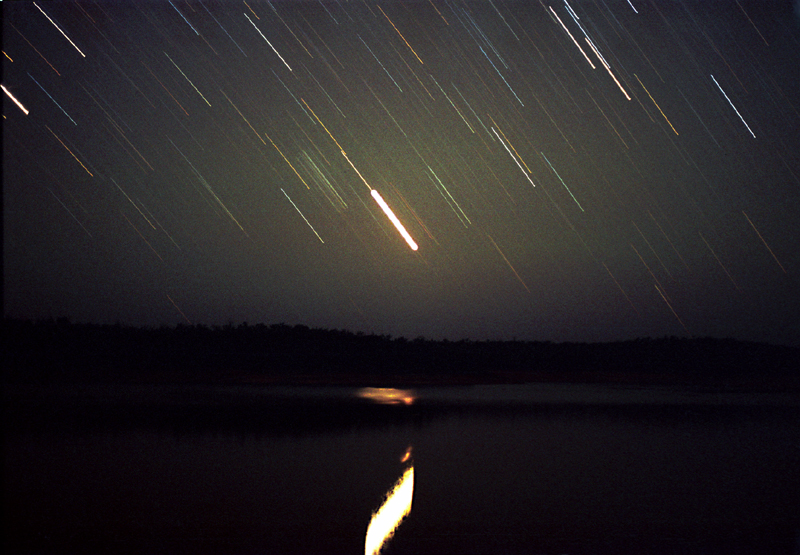
Jupiter rises in the north east close to the Behive cluster.
60 minute exposure, Fuji Super HG II 400 film.
50mm Nikkormat lens set at f/2.
The eclipse of January 15, 1991, was an annular eclipse, with the track of annularity passing directly over Perth. In the city, the duration of annularity was a little over 7 minutes. The eclipse occured on a Sunday, and during the middle of summer, so there was little concern being able to observe the eclipse or over the weather. The only downside was that the Sun would rise partly eclipsed, with annularity occuring very shortly thereafter! This meant that a major requirement fro observing the eclipse was a very good eastern horizon. After searching around for a suitable site, I eventually decided upon the wall of one of the local reservoirs. I had used this site before as a dark sky site and so knew it was a good observing site. The Sun would rise over the water and so it was hoped that this would make for more steady seeing conditions. In the end, about 12 friends from the astronomy club decided to join me at this site, along with astrophotographer Akira Fujii and some of his friends from Japan.
One of the group arranged with the water corperation to obtain a key for the boom gates to the dam wall so that we could set up our telescopes very early. We started to arrive around 4.00am and started setting up. My plan was to concentrate on photographing the eclipse with an 8" celestron with a full aperture solar filter, that I had borrowed from the university at which I was studying. When one of my friends saw what I was planning, he asked if he could also use the telescope to take a few photographs of annularity. Knowing that annularity would last for several minutes, I agreed.
When we arrived the sky was perfectly clear and dark.

However as dawn approached a few clouds started to form low in the east. Right where the Sun would rise! Sure enough, as the Sun rose it was hidden behind the clouds!
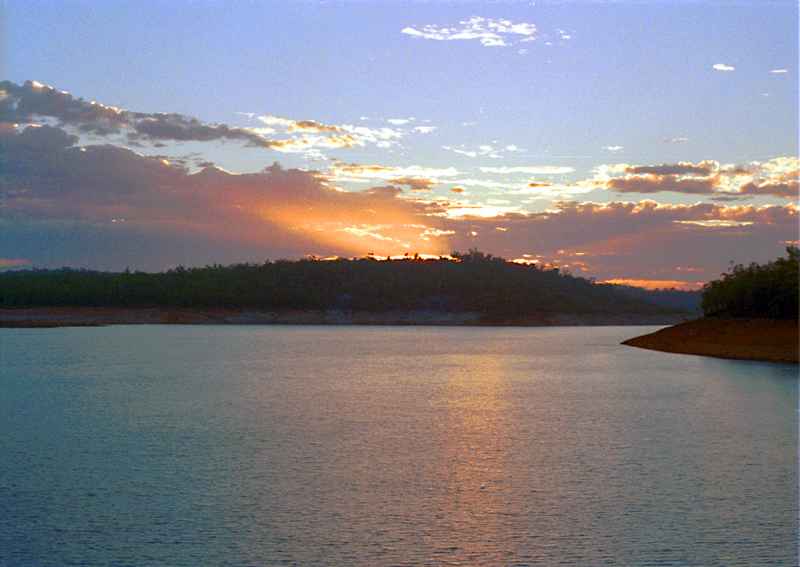
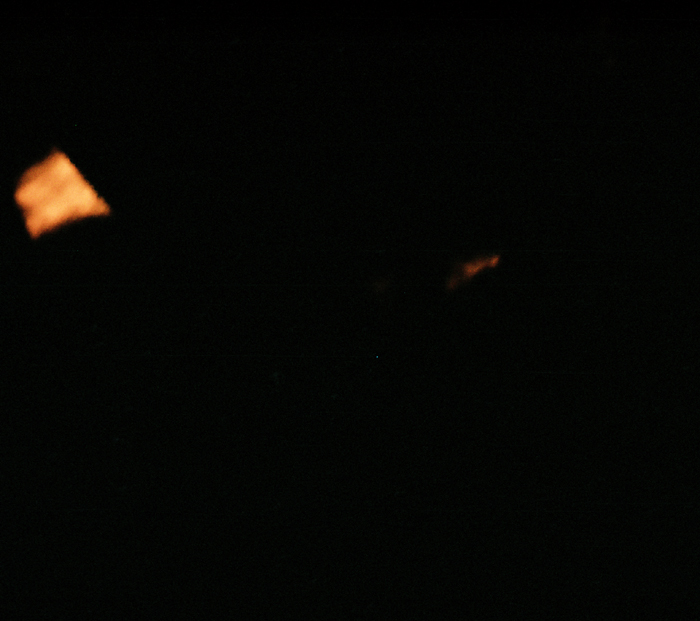
However annularity approached, the Sun rose higher and started to appear between gaps in the cloud.
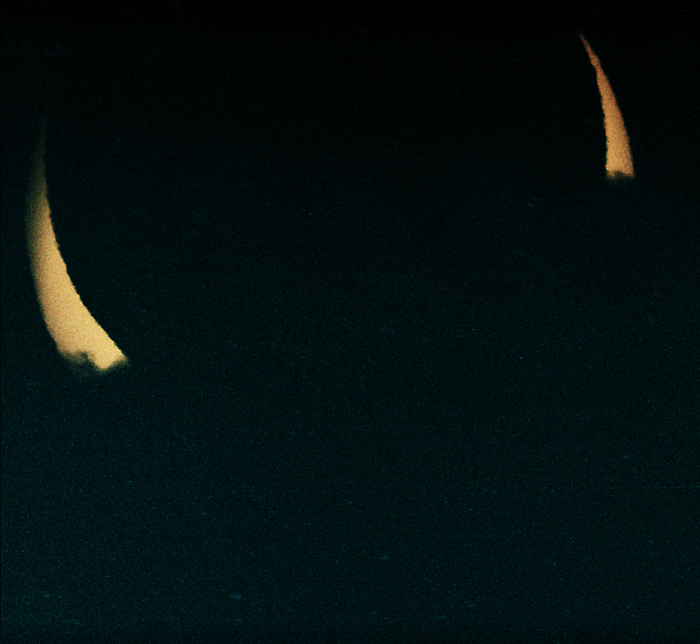
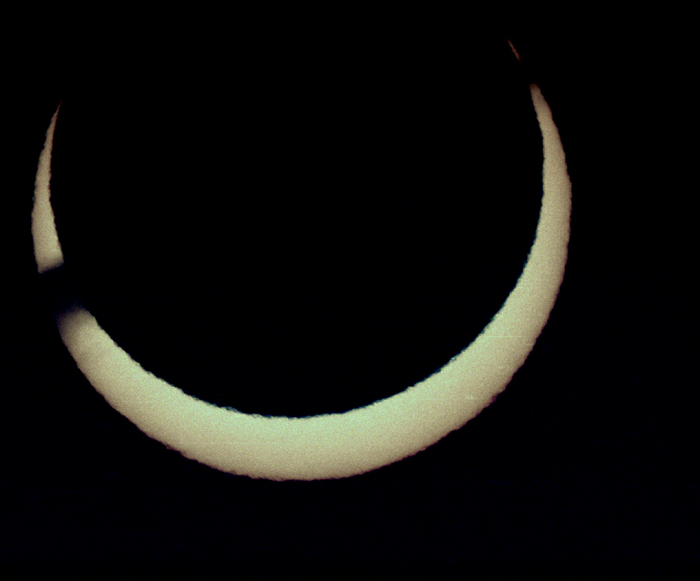
Once annularity started, there were a few gaps in the clouds through which the eclipse could be seen. During thse breaks I quickly grabbed a few pictures.
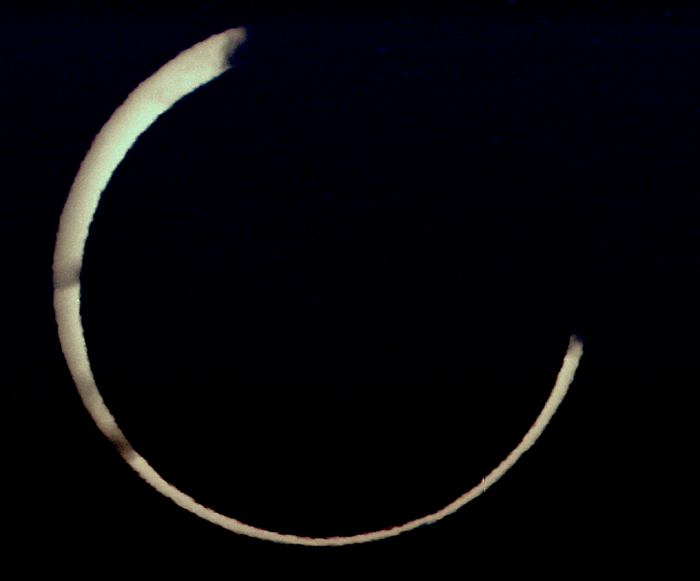
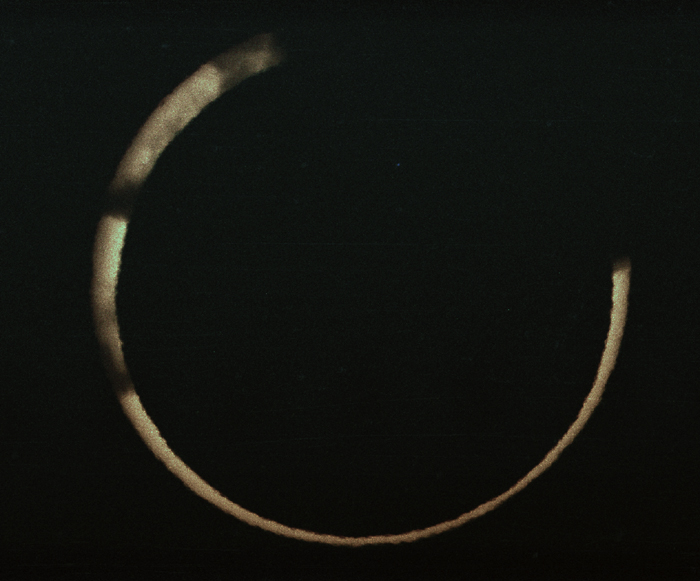
Having taken several photographs of annularity, I surrendered the telescope to my friend. While he was trying to get some photographs, I enjoyed the sight of the eclipse and tried a couple of wide field photographs.
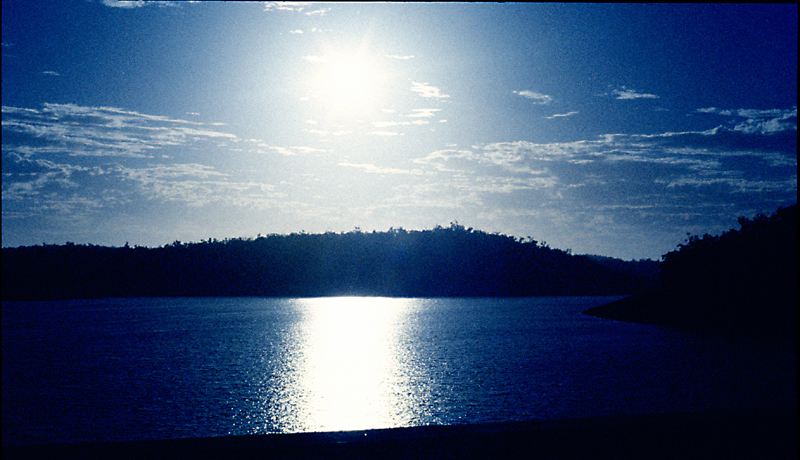
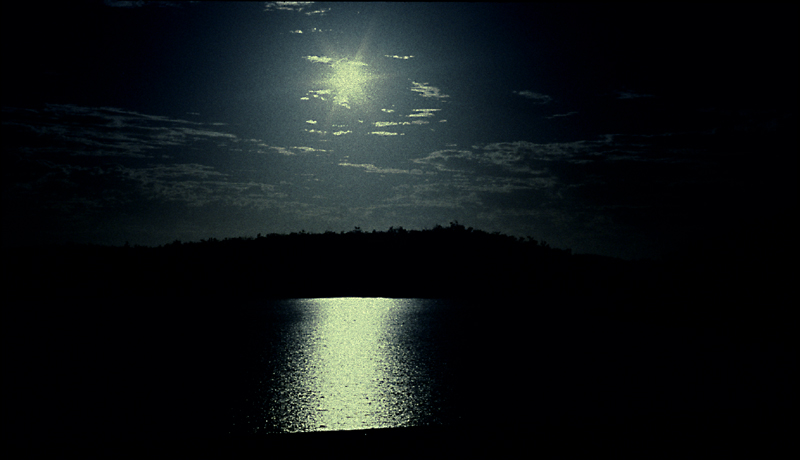
After a couple of minutes, the Sun was clear of the cloud, so I was anxious to take some more photographs. Then came a problem! My friend had managed to jam his camera in the telescope!!!! To this day I do not know how he managed to do it! Suffice to say, that by the time I had managed to wrestle his camera off the scope, annularity was over! A big lesson for eclipses.... NEVER let someone else use your equipment during an eclipse!!!!!
The rest of the eclipse passed off without any problems. The Sun was clear of any clouds and I had my camera back on the telescope. As a result I managed to get a good sequence of pictures of the partial stages.
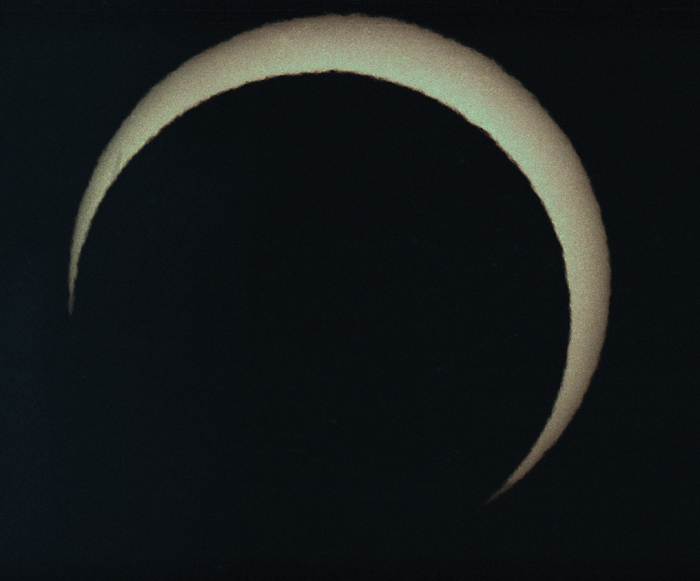
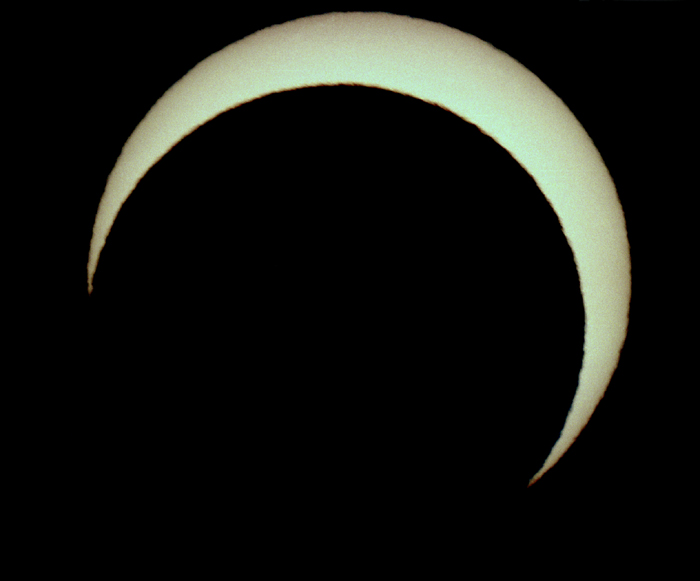
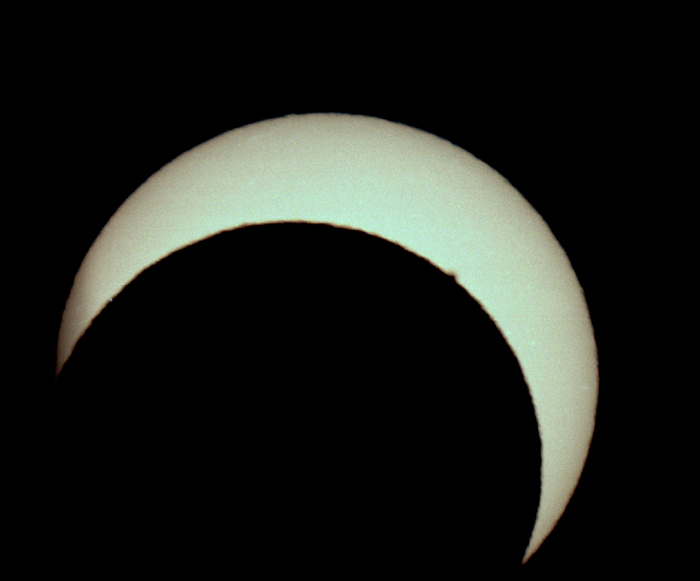
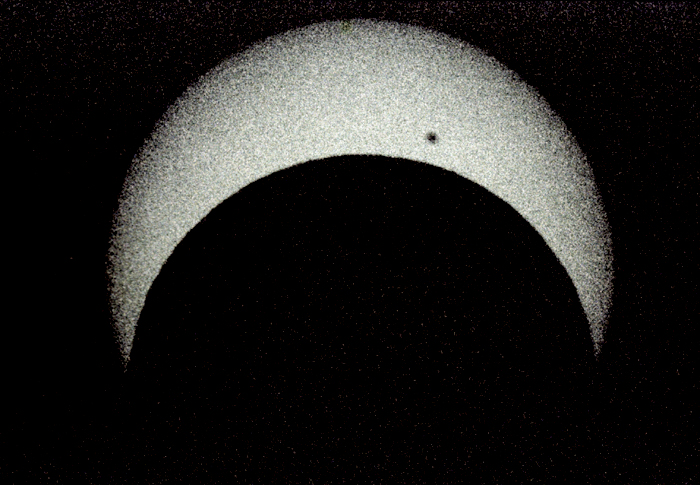
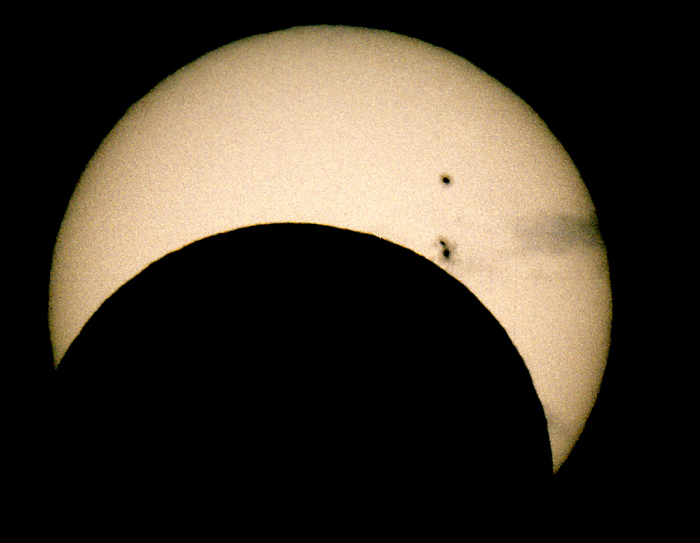
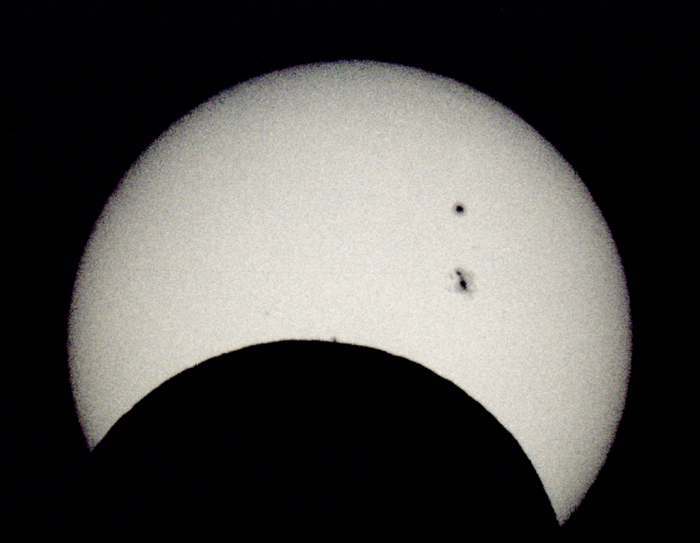
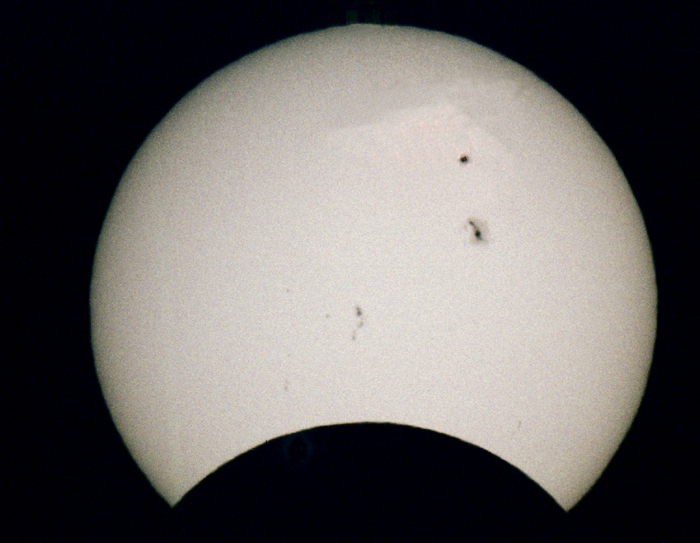
Following the eclipse, we all agreed that it had been a good experience, and well worth the early rising. One thing that I did find missing however, was the change in the light. Since the Sun rose almost completely covered, we did not experience the drop in light. Then as the Moon left the Sun and the light increased, it was just like a late dawn!